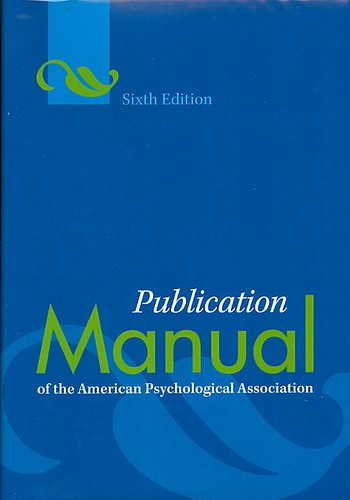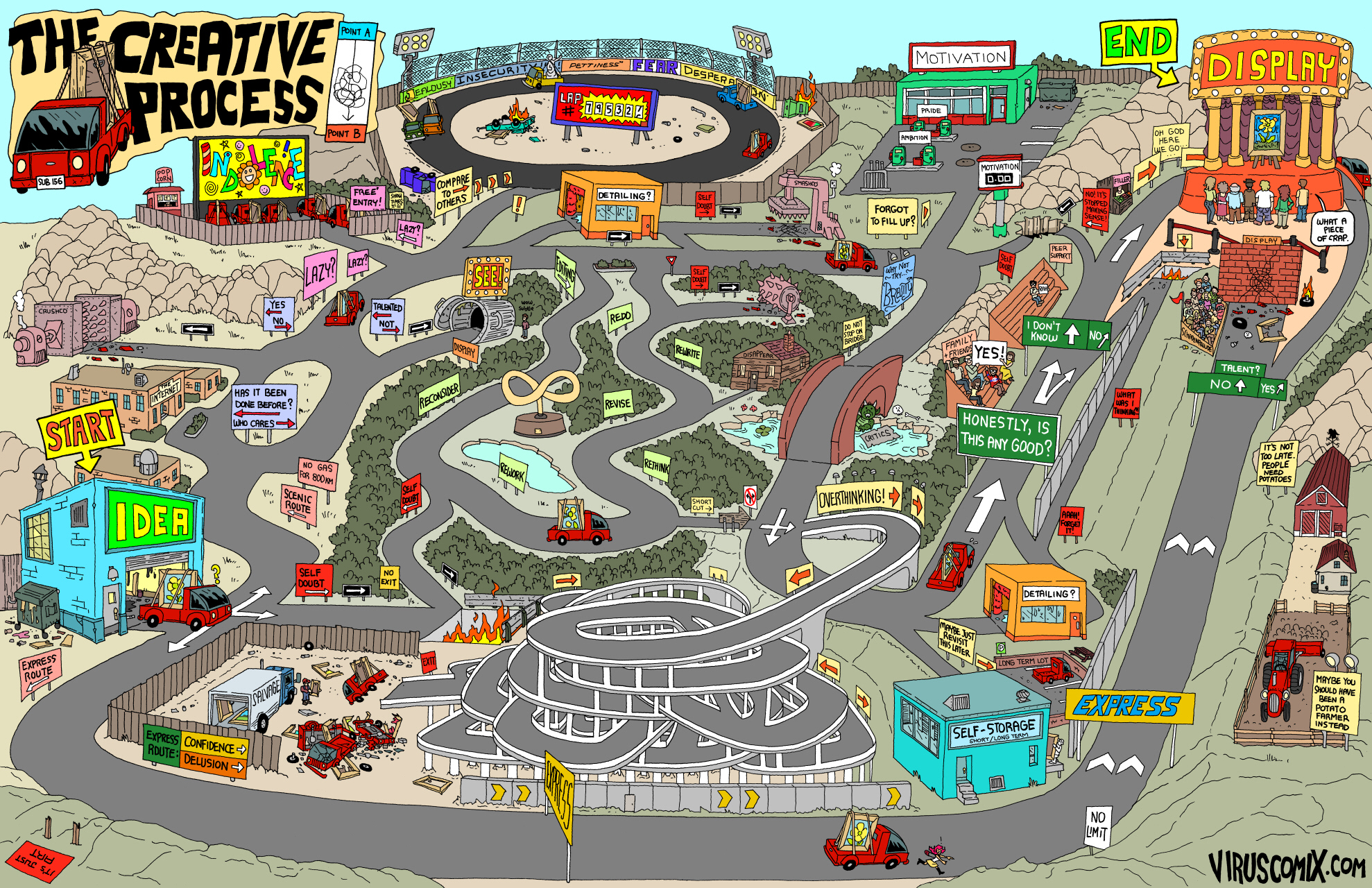
The APA in APA style stands for American Psychological Association. Although the American Psychological Association created it, it is a citation style widely used in all of the sciences. Do not let the fact that APA style is used for science intimidate you. The fact is, it isn’t that much different than MLA style.
APA style and MLA style are fraternal twins. Although they are not identical to one another, they are so similar that it’s possible to get confused between them if you’re not careful. They use the exact same information but since they prioritize different things, they arrange that information in a different order.
It’s important to note that APA style asks for a title page, a running head across the top of all pages, and an abstract page. If you are typing up a paper that requires those sections, please see Purdue’s Online Writing Lab’s reference guide for formatting your essay correctly. This blog post will only focus on how to construct the citations you will use in your paper using the 6th edition of the APA Style Guide.
There are only 3 components to a citation style:
- References page (known as the Works Cited page in MLA style)
- Parenthetical citations
- Notes (either footnotes or endnotes)
You may think that these components are arranged in the wrong order as the References page doesn’t actually appear until the very end of a paper, but you can’t build a parenthetical citation without the References page (indeed, a parenthetical citation is meaningless without its corresponding entry in the References page). If you practice starting your References page as soon as you begin writing your papers, after a while it will feel more natural than leaving it until the end and you’ll thank yourself when you see how much more quickly you get your essays finished.
If you’re confused as to what a citation style is, please see my post “Citation Styles: A Primer.” When you’re comfortable with the what and why of APA style, come back to learn the how. There are only 3 components, remember, so you only have to learn how to execute each and you’re set to start citing scientific research!
APA Style References Page Entry
There are several pieces of information you will need in order to construct the References entry, so make sure you jot them down when doing your research so that you won’t have to hunt them down later.
- the author’s full name
- the title of the article and/or book, newspaper, journal, etc.
- the date of publication of the source you are citing
- the place of publication (if your source is a in print)
- the name of the publisher
- the page numbers of the article or book (if your source is in print)
- the volume and issue number (if your source is a magazine or journal)
- the URL of the source (if your source is online)
Once you have all of your information gathered, you can construct a Reference page entry just by arranging them in a preset order, depending on source type. The following are examples of the most common types of sources. Follow the formatting of the examples EXACTLY. If words are capitalized, capitalize them in your own References page, etc.
Book:
Smith, J. K. (2010). Intro to biology: The seeds of life. New York: Penguin Press.
Magazine Article
Johnson, J. (1992, April). When algae strikes back. Nature, 15, 45-59.
Notice that the number that follows the magazine is the volume number. If the journal or magazine has several issues per volume, those would be included in parentheses immediately after the volume number, like so: Nature, 15(4)
Online Blog Post/Article
Seitan, C. (2011, August 29). How to cite in APA style. Writing Simplified. Retrieved from http://www.writingsimplified.com/how-to-cite-in-APA
Online Video
TexasCountryReporter. (2010, Sep 29). Dogs trained in jail [Video file]. Retrieved June 6, 2011 from http://youtu.be/1WhSHGOmxtg
APA Style Parenthetical Citation
There are only 3 pieces of information you will need in order to construct a parenthetical citation: the author’s last name, the year of publication, and the page numbers (for print sources or online sources that have pagination).
There are three different ways you can incorporate a source into your text. You can include a short quote, a long quote, or a paraphrase. I will show you an example of each type of citation so you can see how simple it is to cite sources in APA style.
Short Quote
When including a direct quotation, you need to indicate to your reader that the words you are quoting are not your own (by putting them inside quotation marks), and attribute the words to the actual author (by including his/her name immediately before or after the quote). In APA style, you need to follow the author’s last name with the year his/her work was published; this year is enclosed in parentheses. If you are quoting a source that has pagination, you include the page numbers in parentheses at the end of the sentence immediately before the period.
If you are confused by the written directions, just use the following examples as models for creating your own citations:
- In a study conducted by Smith (2010), she found that “rats are as susceptible to tickling as humans” (p. 15).
- The research concluded that “hamsters have very poor vision” (Smith, 2008, p. 20).
Long Quote
Long quotations (longer than 4 lines on a printed page) are called “block quotes” because you have to indent the quote, creating a block of text on the page. These quotes need to be introduced and cited just as short quotations do. The only differences are you include the final parenthetical citation AFTER the final period and you DO NOT enclose the quotation in quotation marks. Note that in most academic papers, your teachers will prefer that you do not italicize the quotation.
In a recent study conduced by Smith (2007), she found that:
The great myth of the 21st century is the idea that multi-tasking is positively correlated with productivity. Quite the contrary, multi-tasking decreases efficiency. (p. 115)
Paraphrase
When you paraphrase a source instead of quoting directly from it, you do not need to include page numbers (if your source has pagination). The APA style guide strongly encourages the use of page numbers, however, so I will include them in the examples. Other than that, continue to cite the way you would for a short quotation.
- Smith (1998) measured the length of rats’ tails and found that the longer the tail, the smarter the rat (p. 25).
- One study even discovered that rats prefer healthy foods to eating junk food (Smith, 2000, p. 18-20).
APA Style Notes
APA style does allow you to use footnotes in your paper if absolutely necessary. If you decide you do need to include an aside note that doesn’t fit in the text of the paper, use your word processor to insert a footnote. Footnote indicators follow all punctuation marks EXCEPT dashes and close parentheses.
Examples of Footnote Indicators:
Teddy bear hamsters1 are often sold at pet stores.
1Although these hamsters are called teddy bears, they are not genetically related to bears.
Africa is the birthplace of all languages (according to studies done by historical linguists2).
2There are too many studies to properly cite them all. Please search "Africa language birthplace" for a full listing of research studies in GoogleScholar.
More Resources
There are more resources online, so if you want to progress beyond the basics of APA style, or have a more detailed question, there are plenty of web sites available to you. The official APA actually has a tutorial online that takes you through each step of the citation process if this blog post went too quickly for you. And remember, you don’t have to do it alone when it comes to citations; check out free online citation generators to help you with your work and to double-check what you’ve created.
Photo credit: lwtclearningcommons




















